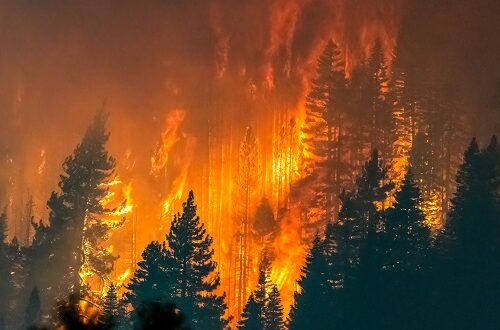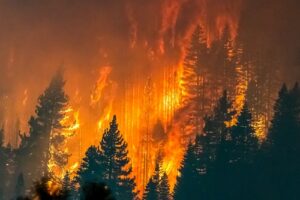Fire Behavior
Ground, surface, and crown are the three basic types of wildland fires. You need to understand the behaviors of each of them. Only then can we understand their dangers, how they travel, and how they can be extinguished.
Ground Wildfires
Ground fires are mostly found in times of extreme drought. They burn with intense heat, which can mean they kill off even the largest of trees. It’s possible for them to spread fast as they take out all the fuel that surrounds them.
Ground fires are important for the natural lifecycle of the environment, though. They sterilize the soil, which can be beneficial for certain types of plants.
At the same time, they can be some of the most dangerous. They increase water runoff, which can lead to a high chance of flash flooding.
Surface Wildfires
Surface fires are the most common types that you’ll see on the news. They burn through leaves, low vegetation, and downed branches. They move fast, which means they don’t usually penetrate the soil. In fact, they don’t tend to even raise the temperature of the soil.
The larger trees tend to survive these sorts of fires. There are times that a clump of trees will burn, which is known as a passive crown fire. However, these instances are isolated.
Crown Wildfires
When you see the entire canopy of forests on fire, you’re looking at a crown fire. This is extremely dangerous and problematic. These fires tend to burn all the way down to the soil, heating up the soil to extreme temperatures like ground fires do.
The good thing about crown fires is that they tend to be predictable. It can help the firefighters put out these fires as they’re able to predict the direction of movement.
Heading, Backing, and Flanking Fires
All types of fires behave in similar ways. They will have a heading fire that moves fastest with the wind or up a slope. The backing fire will burn down the slope and upwind.
Flanking fires will then form the sides, as if they’re flanking the front and back, traveling at intermittent speeds. There are times that offshoots will form from the flanks. There will also sometimes be patches within a fire that are fire-free and not burning. It all depends on the fuel around.
It can feel like the behavior of the fires are unpredictable. However, experts understand these different speeds and needs for the fires. They’ll also look at the fuel and heat around the fires to help predict movement and behavior. This is the best way to put out the serious wildfires.

